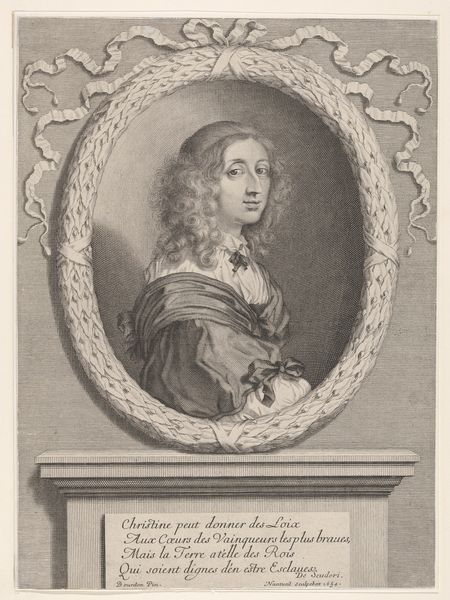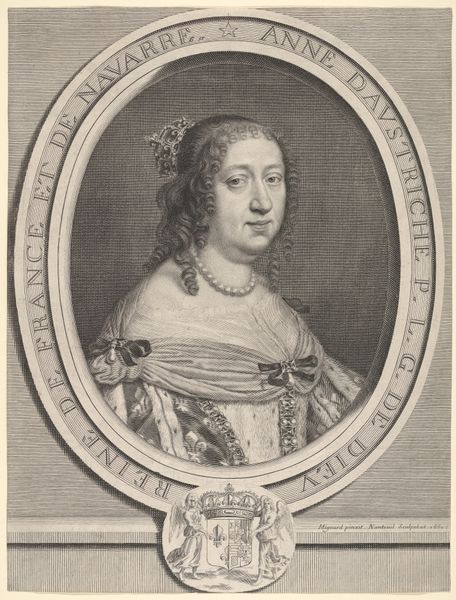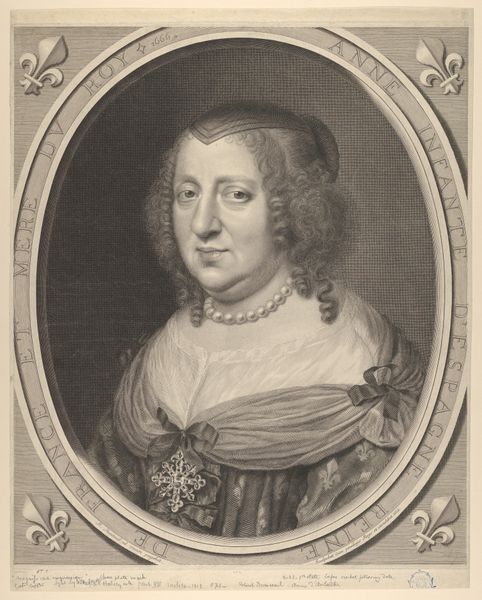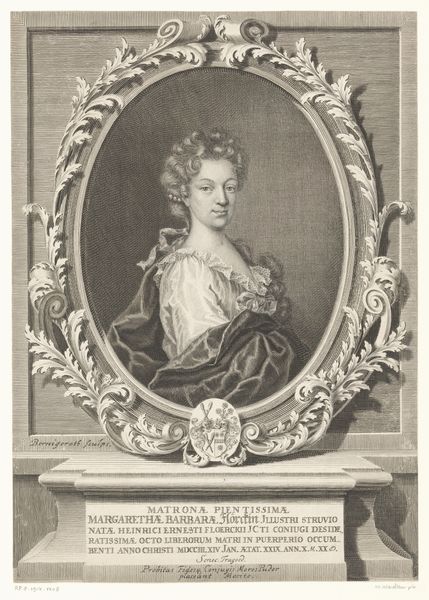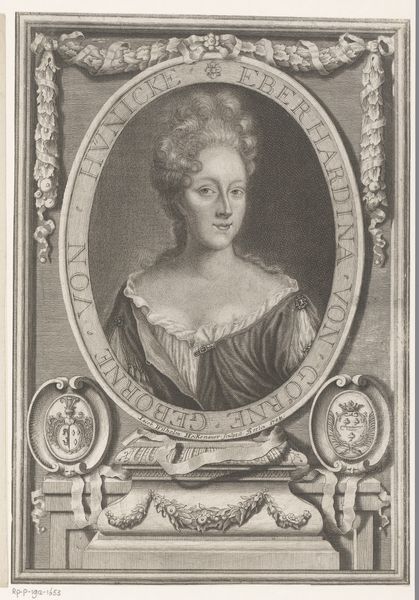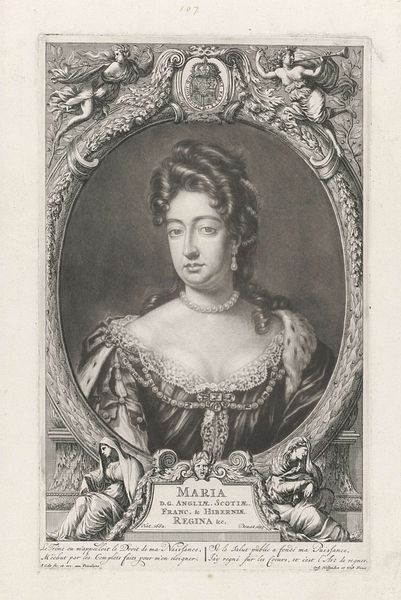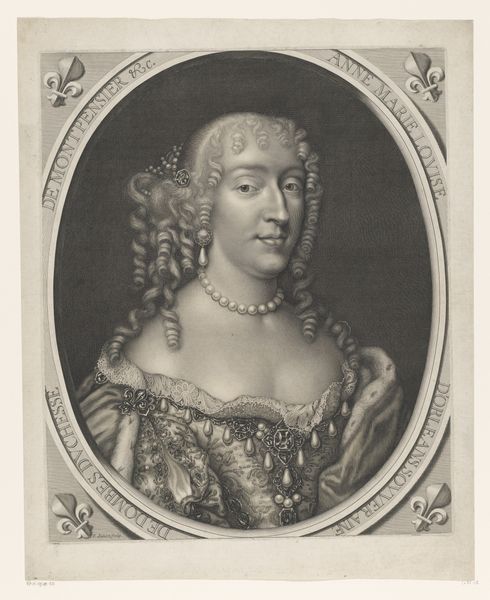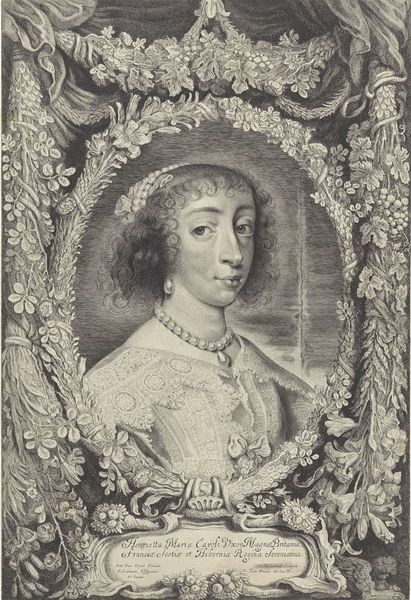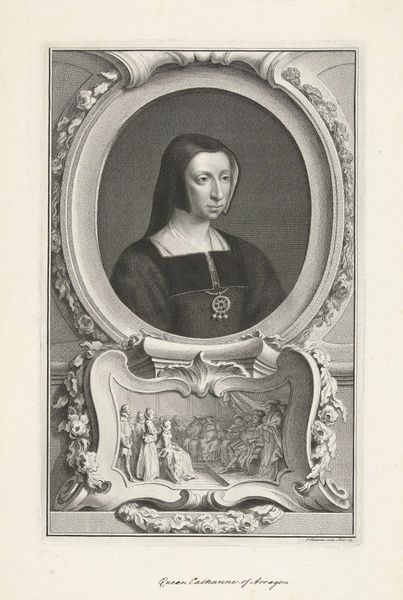
print, engraving
#
portrait
#
baroque
# print
#
history-painting
#
engraving
Dimensions: 466 mm (height) x 333 mm (width) (plademaal)
Editor: This is "Dronning Christina," a print by Albert Haelwegh, created in 1661. It feels quite formal, with that wreath framing the queen. What can you tell me about the significance of such a portrait during this time? Curator: Well, considering the historical context, this image served a very specific function. Portraits like this weren't just about capturing a likeness. They were powerful tools for projecting an image of authority and legitimizing a ruler’s power. Given Christina's rather…controversial reign and eventual abdication, how might this image be attempting to manage her public image? Editor: Controversial? I wasn't aware. The engraving itself seems pretty straightforward – a queen in her finery. Is there something about Christina that would change how audiences perceive this work? Curator: Precisely. Christina was known for her intellectual pursuits and, crucially, her conversion to Catholicism, a deeply divisive act in Protestant Sweden. Prints like this, distributed widely, could either reinforce loyalty or provoke further dissent depending on the viewer's perspective and political leaning. Do you see how the framing wreath and the crown hovering above her head emphasize her regality and power despite the controversies? Editor: I do now! It's like a carefully constructed message. Did her conversion influence where these prints were distributed? Curator: Absolutely. The engraver, Haelwegh, operated out of the Dutch Republic, a relatively tolerant place compared to other parts of Europe. The print probably found a receptive audience among those sympathetic to her religious choices or at least willing to tolerate them. Its reception in Sweden would have been far more fraught. So it speaks to the public role that Christina’s patronage occupied during this part of her life. Editor: Fascinating. It's much more than just a portrait; it's a statement. Curator: Exactly! It is fascinating to unpack how political, religious, and social factors informed both its creation and reception. Thanks for helping contextualize it.
Comments
No comments
Be the first to comment and join the conversation on the ultimate creative platform.

